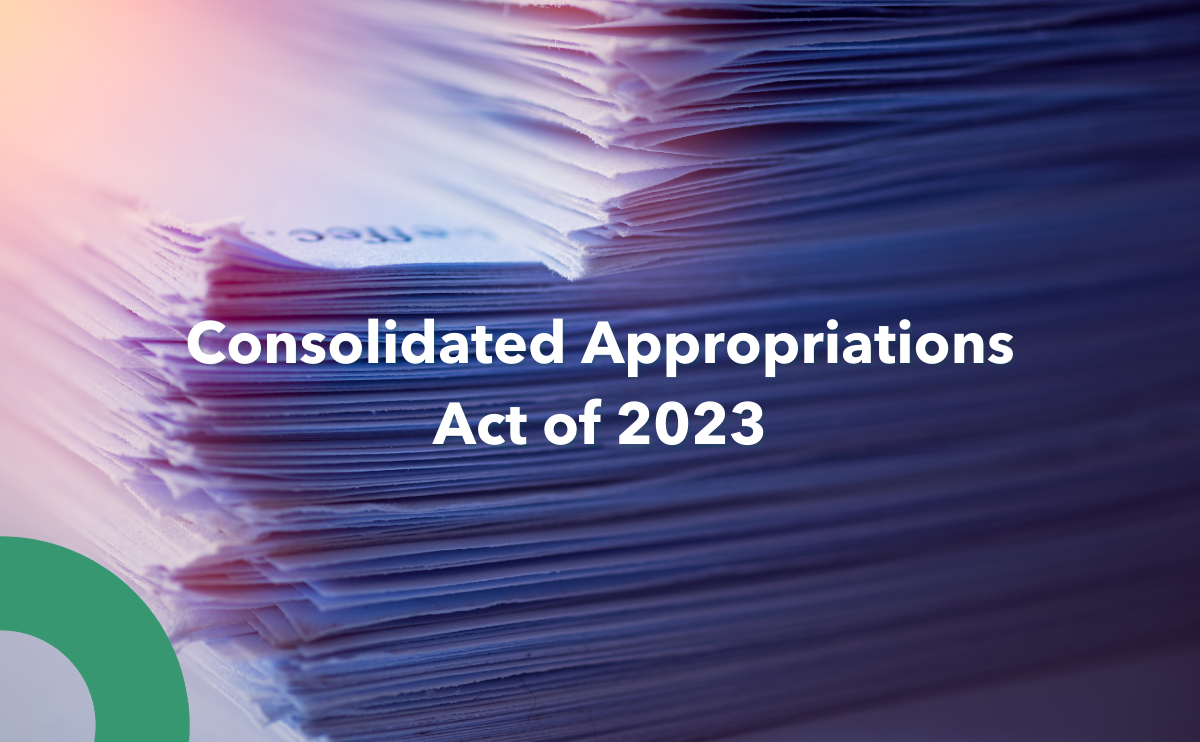
Congress passed the much-anticipated $1.65 trillion-dollar omnibus spending bill known as the Consolidated Appropriations Act of 2023 (“CAA”) on December 23, 2022, followed by President Biden signing the Act into law on December 29, 2022. At more than 4,000 pages, the Act includes a wide range of provisions that impact multiple sectors.
Of particular interest to attorneys, accountants, and wealth managers who advise philanthropists are the provisions starting midway through the bill. The bipartisan legislation often referred to as “SECURE 2.0” is included in the CAA legislation. As background, SECURE 2.0’s provisions build on the original SECURE Act of 2019 (“SECURE” stands for “Setting Every Community Up for Retirement Enhancement). SECURE 2.0 includes the Qualified Charitable Distribution (QCD) enhancements that have been in the works for many months.
Here are three key provisions affecting philanthropists in the new law:
– Taxpayers may now make a one-time $50,000 QCD transfer to a charitable remainder trust (CRT) or other split-interest gift such as a charitable gift annuity (CGA). These are the “Legacy IRA” provisions. Note that the law effectively mandates that the CGA or CRT be created solely for the purpose of receiving a QCD because the new statute requires that the vehicle contain only IRA assets.
– The required minimum distribution (RMD) age (previously 72) increased to 73 on January 1, 2023. The age will increase to 75 beginning on January 1, 2033. While this provision is not directly tied to charitable giving, it will nonetheless impact your clients’ overall financial plans and potentially affect the timing and strategy of their philanthropy. As a reminder, “required minimum distribution” (RMD) refers to the mandated amount that a taxpayer must withdraw from qualified retirement plans, which include IRAs as well as 401(k)s and other tax-deferred retirement accounts.
– The annual per-taxpayer $100,000 QCD cap is now slated to be indexed for inflation, which will allow taxpayers to give even more from their IRAs directly to nonprofits or causes.
Here’s what has not changed:
– Eligibility for making a QCD still starts at 70 ½. This allows taxpayers who are not yet required to take IRA distributions under the RMD rules to still take advantage of the QCD technique without the income tax hit on the distributed funds while also removing those funds from liability for future estate taxes.
– Taxpayers required to take RMDs can still count QCDs toward their RMDs, thereby avoiding the usual income tax hit on RMD dollars.
– Charities eligible to receive QCDs include designated funds, field-of-interest funds, at the Omaha Community Foundation, but still not donor advised funds.